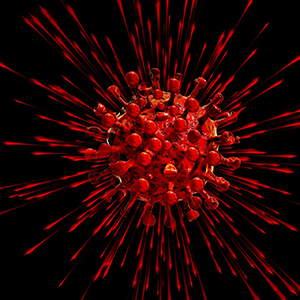Post severe COVID-19 infection lung damages study. The experience of early three months multidisciplinary follow-up

All claims expressed in this article are solely those of the authors and do not necessarily represent those of their affiliated organizations, or those of the publisher, the editors and the reviewers. Any product that may be evaluated in this article or claim that may be made by its manufacturer is not guaranteed or endorsed by the publisher.
Accepted: 16 December 2021
Authors
The correct type and time of follow-up for patients affected by COVID-19 ARDS is still unclear. The aim of this study was to evaluate the survivors of COVID-19 ARDS requiring non-invasive respiratory support (NRS) admitted to a Respiratory Intensive care unit (RICU) from March 8th till May 31st 2020 looking at all sequelae via a comprehensive follow up. All patients underwent a multi-disciplinary instrumental and clinical assessment within three months form admission to evaluate all infection related sequelae. Thirty-eight patients were enrolled lung-ultrasound (LUS) showed an outstanding discrimination ability (ROC AUC: 0.95) and a substantial agreement rate (Cohen’s K: 0.74) compared to chest CT-scan detecting improvement of lung consolidations. Youden’s test showed a cut-off pressure of 11 cm H2O ExpiratoryPAP-continuous-PAP-max (EPAP-CPAP) applied at the airways during hospitalization to be significantly correlated (p-value=0.026) to the increased pulmonary artery common trunk diameter. A total of 8/38 patients (21.8%), 2 of whom during follow-up, were diagnosed with pulmonary emboli (PE) and started anticoagulant treatment. Patients with PE had a statistically significant shorter length of time of hospitalization, time to negative swab, CPAP/NIV duration, P/F ratio and D-dimers at follow-up compared to non-PE. A comprehensive approach to patients with ARDS COVID-19 requiring NRS is necessary. This study highlighted cardiopulmonary impairment related to the ARDS and to the high-EPAP-CPAP-max greater than 11 mmHg provided during admission, the usefulness of LUS in monitoring post-infection recovery and the correct identification and treatment of patients with PE during follow up.
How to Cite

This work is licensed under a Creative Commons Attribution-NonCommercial 4.0 International License.






